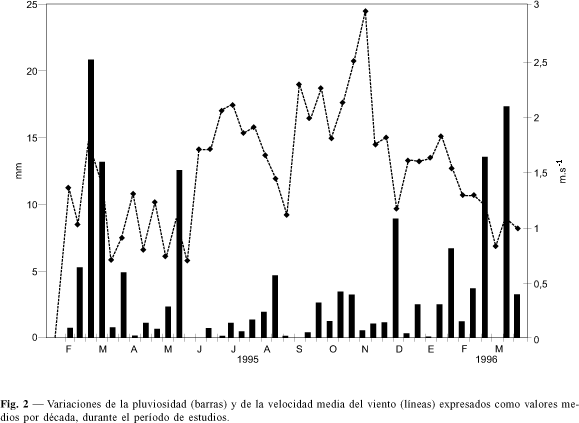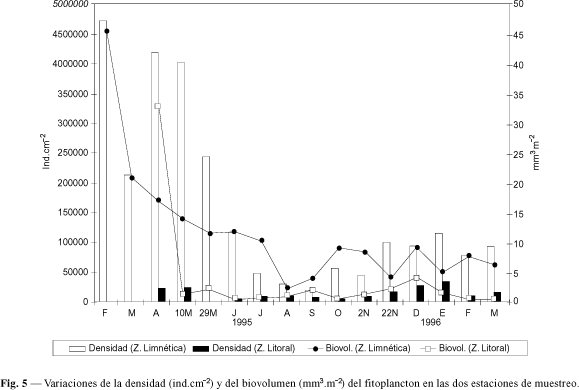Species composition, biomass and diversity of the phytoplankton in a subtropical lake (27°29'S; 58°45'W) were studied from February 1995 to March 1996. One or two samples were taken monthly in the limnetic and the littoral area. Cell counts were done by the Utermöhl method (1958). Phytoplankton biomass varied among 2.38 and 45.59 mm³.m-2 with a mean value of 12.11 (±10.52) mm³.m-2. The population density oscillated among 0.3x10(6) and 4.7x10(6) ind.cm-2. Cyanophyta was the dominant group all the year contributing among 25% and 83% of the total biomass. Cylindrospermopsis raciborskii, Aphanizomenon sp. and Microcystis aeruginosa were the dominant species. The Chlorophyta, second group in importance, contributed among 8% and 50% being Botryococcus braunii the dominant species. Bacillariophyceae, Xanthophyceae, Euglenophyceae and Cryptophyceae they did not surpass 20% of total biomass. Chrysophyceae and Dinophyceae they did not surpass 5% of total biomass. Chlorophyll a content ranged between 0.7 and 8 µg.L-1 reflecting the annual variation of phytoplankton biomass. Phytoplankton density diversity varied among 0.34 and 3.69 bits.ind-1. Biomass diversity varied among 1.04 and 2.92 bits.µm³, with a similar variation in the depths of the lake. The lowest biomass and the highest diversity were always found in the littoral zone. CStrategists, with a high SA/V ratios prevailed in density (Monoraphidium contortum, M. tortile, Chlorella vulgaris and other small flagellates of Chlorophyta) while SStrategists (with a low SA/V ratios) such as Microcystis aeruginosa and Botryococcus braunii prevailed during the greater part of the year. Cylindrospermopsis raciborskii and Aphanizomenon sp. were dominant in density and biomass when the temperatures were superior to 20°C and the solar radiation surpassed 20 MJ.m-2. The RStrategists (Aulacoseira italica and Gymnodinium sp.) prevailed during great unstability of water column. Phytoplankton biomass was positively correlated with rain falls 10 days before each sampling (r = 0.772; p < 0.01; g.1. = 30). During the period that prevailed the filamentous Cyanophyceae an increase in the heterocysts frequency was observed in coincidence with a period of notorous drought.
subtropical lake; phytoplankton; composition; biomass; diversity

















